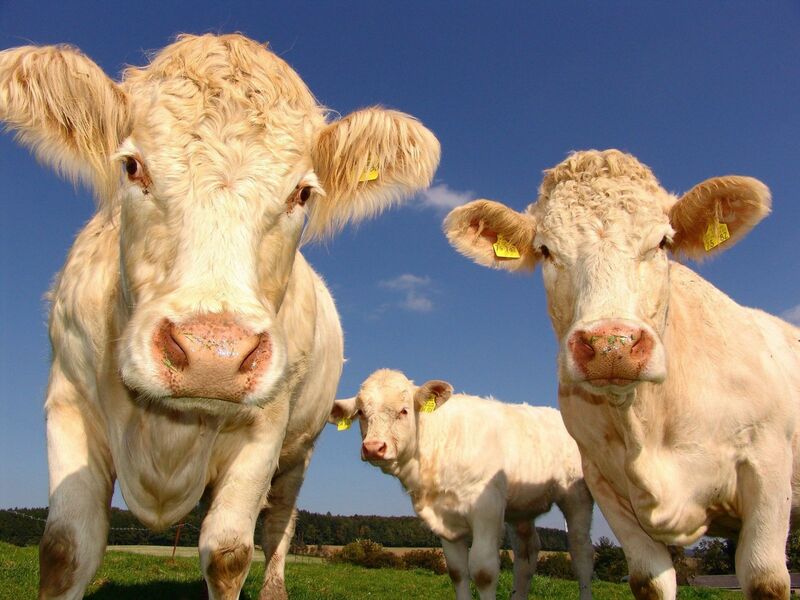
The cattle market is experiencing a period of constrained supplies, a trend expected to persist in the coming years due to challenges posed by drought and elevated input prices, limiting opportunities for herd expansion.
This reduction in herd size coincides with robust demand for beef, propelling cattle prices to higher levels. Since hitting a low point in the spring of 2020 near $76 per hundredweight (cwt), front-month live cattle futures prices have more than doubled, reaching $190 in the Fall of 2023. Since the October peak, prices have dropped approximately 12%. A similar upward trajectory was observed in feeder cattle futures values over the same period. The inherent biological processes involved in cattle farming dictate that it will take several years for inventories to reach their nadir and for herd expansion to commence, marking the completion of the cattle cycle.
The U.S. Department of Agriculture (USDA) reported the country's cattle inventory at its lowest level in multiple years. Additionally, beef cow supplies have dwindled to their lowest level in 60-plus years.
Producers and processors actively trade the cattle market. Ranchers and feedlots create cyclical patterns in cattle prices due to weather conditions for pasture feeding and feedlot placements during Winter, impacting supply. Processors and wholesalers make demand as restaurants and large grocery chain stores (Costco, Walmart, McDonalds, etc.) purchase beef to satisfy consumer demand. The supply side has been unable to keep up with the demand, resulting in much higher prices.
Another impact on cattle prices will be the demand from the Goldman Sachs Commodity Index (GSCI), updated in November 2023 for its 2024 sector weighting of the 24 commodities in the index. The GSCI is a long-only commodity index fund that uses futures contracts to weight the index. The livestock sector of the GSCI had the most significant percentage of positive weight change for 2024, with feeder and live cattle making up the bulk, reflecting a 1.87% increase in index weighting for 2024.
Since October's live cattle price collapse of about 12%, will demand come back into the market at these sale price levels?
Significant Timing of a Seasonal Pattern and Oversold Market

Source: Moore Research Center, Inc. (MRCI)
Viewing the daily April live cattle futures chart, the price sell-off erased almost four months of the recent bull rally. During this decline, the fundamentals remain intact for higher prices. Technically, the market is oversold as the relative strength index (RSI) is below 30. The recent two dives into oversold territory did not result in a short covering rally. However, the upcoming seasonal buy pattern may catalyze a fundamentally bullish and technically oversold market to rally.
MRCI research has found that the April cattle futures have a significantly strong seasonal buy pattern approaching. Their research has revealed that the April cattle futures closed higher on approximately January 02 than on December 09 15 of the past 15 years, a 100% occurrence for the prior 15 years. An interesting and encouraging side note is that in 6 of those 15 years, 40% occurence never had a daily closing drawdown.
The seasonal window to buy may offer an opportunity for one or more trades. The key with a seasonal window is that the environment should remain bullish, allowing different opportunities to participate. Please always consider the risk and if the trade fits your trading rules.
It's important to note that while seasonal patterns can provide valuable insights, they should not be the sole basis for trading decisions. Traders must also consider other technical and fundamental indicators, risk management strategies, and market conditions to make well-informed and balanced trading choices.
The Commitment of Traders (COT) Report Outlook

Source: CMEGroup Exchange
The COT report illustrates that the commercial processors are buying this current price decline (blue bars) as they've added long positions weekly. The producers have been unwinding their short positions (red bars) for several weeks, as seen by the decreasing columns.
There are many positive events for this seasonal buy:
- The fundamentals are still bullish
- Technically, the market is oversold on the daily timeframe
- The processors are aggressively buying, coming into a seasonal buy
Reminder: there are still no guarantees that this trade will work. Traders must still assess the risk and determine if this trade is right.
On the date of publication, Don Dawson did not have (either directly or indirectly) positions in any of the securities mentioned in this article. All information and data in this article is solely for informational purposes. For more information please view the Barchart Disclosure Policy here.






